|
|
Post by jfc on Oct 10, 2008 18:53:27 GMT
Onto the top sahes now we have the horn sorted ;D Mortice them first so the timber supports itself on the machine bed . If i did the horn first the timber would want to flip up when i machined the back of the mortice . 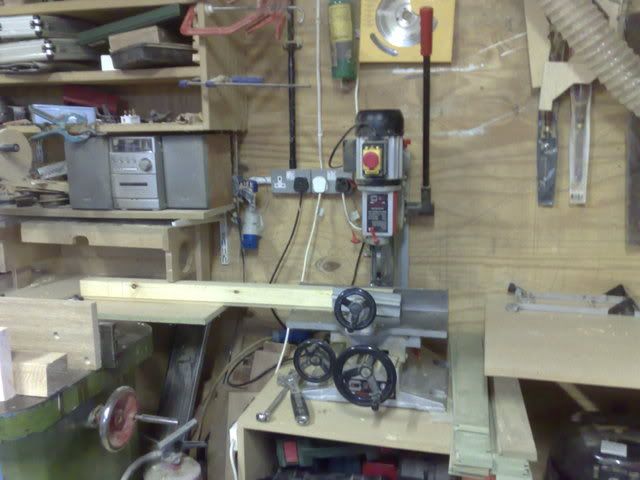 Then onto the horns , i needed to remove the chamfer as it was fouling the router shank but not to much hassle as all of this part is removed anyway .  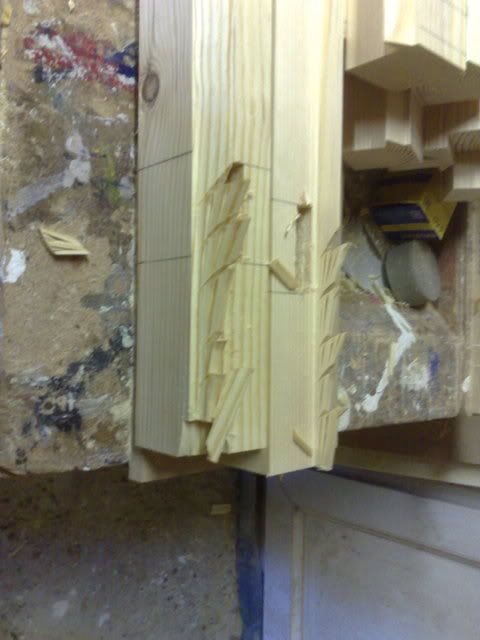 Then onto the Legacy  I did them in pairs but if i had bothered to make a new bed i could have done about 6 or 7 at a time .  All the horns done and a few wedged bottom sashes . I wedge after glue up as i like to make everything spot on square and clamp it .  A few top sashes ready for clamp up and some wedged bottom sashes .  |
|
Scott
New Member

Posts: 25
|
Post by Scott on Oct 10, 2008 21:47:17 GMT
|
|
|
|
Post by mrgrimsdale on Oct 11, 2008 7:56:16 GMT
Good article. I agree with most of it. Doubtful about the plastic brushes - it's building in obsolescence, and unnecessary anyway - a trad window properly set up is draught proof enough for most purposes. Also I'm getting keen on trad paint. I used to think it lasted so well because of the lead and was thus a lost cause. Now I'm wondering if it is the linseed oil which gives it the quality. What is certain is that modern paints are crap - most of the time. You hear anecdotal evidence of long lasting paint jobs but the evidence I see is of repeated failure. There's some sash window stuff on my site here. Sorry it's in need of up-dating I'll get around to it one day soon! cheers Jacob |
|
|
|
Post by jfc on Oct 11, 2008 9:13:31 GMT
Thanks for reminding me , i need to route in the plastic brush carriers on the meeting rail before i glue up the top sashes .
|
|
Telos
Full Member
  
Posts: 123
|
Post by Telos on Oct 11, 2008 9:26:40 GMT
...What is certain is that modern paints are crap - most of the time... Talking utter sh*te again, I see... The modern world must be a really scary place for you, huh Grandad? If the average cretin doesn't know how to prepare wood properly for painting, this is not the fault of the manufacturer. |
|
|
|
Post by mrgrimsdale on Oct 11, 2008 9:35:38 GMT
...What is certain is that modern paints are crap - most of the time... Talking utter sh*te again, I see... The modern world must be a really scary place for you, huh Grandad? If the average cretin doesn't know how to prepare wood properly for painting, this is not the fault of the manufacturer. How do you do it then? Give us the details. Say frinstance repainting a 100 year old sash with old lead paint hanging off. Or a new copy of same? I've followed manufacturers instructions and had paint failures - hence it's the manufacturer's fault  . I've had pro decorators on jobs - looks nice, done fast, falls off 4 years or so later. What is the big secret? cheers Jacob PS I only paint for myself - with variable results. The worst thing is getting new paint to stick to old work. The work I do I've always left to the client to paint, themselves or a pro. It's really disappointing going back to see stuff I did years ago, now looking tatty cos of crap paint or low maintenance. I talk to others in the same line, they say the same thing. There's a lot of us cretins about ;D |
|
|
|
Post by jfc on Oct 11, 2008 9:58:16 GMT
Get all the old crap off and spray it with Teknos water based paint .  |
|
Telos
Full Member
  
Posts: 123
|
Post by Telos on Oct 11, 2008 10:20:45 GMT
Well, I'll have to admit that I only have experience with new frames or refurbishing modern (less than 20 years old) frames. So, a 100 year old sash would be an unknown to me. However, I have seen a city wide project that involved Sikkens creating specially produced modern colours to recreate the original look of a series of very old buildings which were being renovated, one of which dates from 1556, the rest from late 1700's and early 1800's. The colour of linseed paints were carefully matched and recreated using modern techniques and modern paint technology. So, I know it is possible!
What I would advise is only use professional grade paint and primer. The primer should preferably also be coloured to match the top coat. (This stops differential expansion, which can cause adhesion failure.)
The wood must be perfectly clean and dry, not painted in direct sunlight or when there is moisture in the air. So, no early mornings after September and don't start later than about 16:00 either. The paint will absorb moisture and lose its gloss and shorten its life.
Ideally, if it's a new build, the frames should be primed before installation with a "open" primer that lets moisture out, but protects from rain if it's left standing around.
However, I would say the reason for most external paint breakdown in modern houses is poorly painted internal surfaces, combined with poorly ventilated housing, retaining far too much moisture indoors.
If the outside surface is hermetically sealed and moisture from indoors finds its way into the frame, instead of out through the cracks that old windows used to have. Then the modern paint will appear to be crap, as the moisture in the wood drives the paint off. When in actual fact it is merely the way we live in draft free houses, sometimes combined with the wrong paints being used internally that causes premature paint failure.
I don't think I can repeat this enough, the internal paint finish is, in some respects, more important for the frame life than the external.
|
|
|
|
Post by mrgrimsdale on Oct 11, 2008 10:21:59 GMT
Get all the old crap off and spray it with Teknos water based paint .  Can you spray old stuff in situ? What about glazing bars etc? Does Teknos water paint need a primer? Will it stick to old surfaces - old paint cleaned up, putty - primed or not, burned off old paint etc. Am interested to hear what Telos has to say as I could really do with some useful tips, for old or restored windows/doors in situ. cheers Jacob |
|
|
|
Post by mrgrimsdale on Oct 11, 2008 10:31:45 GMT
Well, I'll have to admit that I only have experience with new frames or refurbishing modern (less than 20 years old) frames. So, a 100 year old sash would be an unknown to me. However, I have seen a city wide project that involved Sikkens creating specially produced modern colours to recreate the original look of a series of very old buildings which were being renovated, one of which dates from 1556, the rest from late 1700's and early 1800's. The colour of linseed paints were carefully matched and recreated using modern techniques and modern paint technology. So, I know it is possible! That's just matching the colours? Not the problem - I'm bothered about matching the durability, even if it's the wrong colourRight. So grey Aluminium primer no good under anything but grey? Sticks well itself, except to putty. Have tried white oil primers - and white quick drying water based primers which are absolutely the worst.That's interesting. I'll think about it. At the mo I've got new repro windows with linseed oil paint outside and no paint at all inside - I coudn't get at both sides whilst it was on the gantry (big window). cheers Jacob |
|
Telos
Full Member
  
Posts: 123
|
Post by Telos on Oct 11, 2008 10:52:51 GMT
That's just matching the colours? Not the problem - I'm bothered about matching the durability, even if it's the wrong colour This is a council approved project in a conservation area. They had to guarantee the quality. You do realise paint doesn't last forever, right? Even if it is the finest quality you will still need to touch it up every 3 or 4 years if you are facing south and recoat every 8 or 10. Even old linseed oil paints need checking every now and again. People did repaint their windows "in the olden days" you know. In fact part of the Sikkens research unearthed paint layers on the building from 1556 which had 21 layers! (And no, they weren't the original windows!) Right. So grey Aluminium primer no good under anything but grey? Sticks well itself, except to putty. Have tried white oil primers - and white quick drying water based primers which are absolutely the worst. Grey is fine for a lot of colours, it all depends on the difference. Dark greens and reds should use the same colour primer and white should always be on a white, or slightly off white primer. |
|
|
|
Post by jfc on Oct 11, 2008 11:08:44 GMT
Yes , a high build primer and then a top coat . You will have to speak to Teknos technical dept to find out if it sticks to glazing bars ;D 01608 683494
|
|
|
|
Post by jfc on Oct 11, 2008 15:32:03 GMT
All the bottom sashes cleaned up and ready to fit and a few top sashes on the clamping wall .  |
|
|
|
Post by agbagb on Oct 14, 2008 11:08:59 GMT
Some great info on painting, I'll be looking into it more detail. I was thinking of dipping my ends in clear preservative before assembly. Is it worth it?
It looks like you've used PVA, I was thinking of using PU. Can anyone advise?
Apologies if I ask some basic questions but things have moved on since I did my "O"level.
I know you like hand cutting the miters on the moldings, but an alternative I used at the weekend was to set the chisel on my mortiser at 45 degrees, to cut a "V" and then routed the rest off.
I'd like to see your meeting rail detail with the brush seal. I've posted my first two ideas on my blog but I'm still not 100% happy.
Andy
|
|
Telos
Full Member
  
Posts: 123
|
Post by Telos on Oct 14, 2008 15:49:47 GMT
Some great info on painting, I'll be looking into it more detail. I was thinking of dipping my ends in clear preservative before assembly. Is it worth it? It looks like you've used PVA, I was thinking of using PU. Can anyone advise? .... It can be worth it, if you're a belts and braces kind of man. Of course I'd recommend yet another Sikkens product, not just glue or preservative dipping. ;D Try Sikkens Kodrin WV 456 to seal end grain. Does what it says on the pot  |
|
|
|
Post by jfc on Oct 14, 2008 16:34:42 GMT
I use exterior PVA for all my joinery , staircases , windows , doors , wardrobes ..... The only other glue i use is extramite ( cascamite ) and i only use that for marine joinery . I did some windows for someone in the summer and they painted the windows with preserve first . It kept bleeding out through the paint  |
|
|
|
Post by jfc on Oct 14, 2008 16:48:41 GMT
Now all the sashes are cleaned up its time for the fancy touches and fittings . Fluting the faces  Making sure it all fits together on the template and fitting packing peices so it all goes back together right when on site  Checking everything runs and fits perfectly 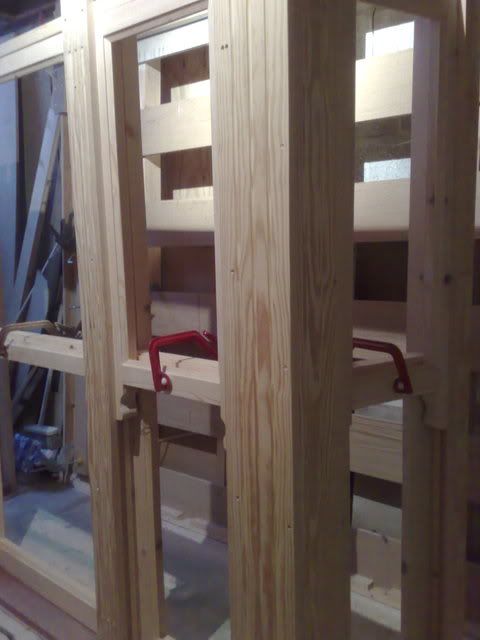  |
|
|
|
Post by engineerone on Oct 14, 2008 18:33:23 GMT
looks really good jason, and thanks for the lessons  paul  |
|
|
|
Post by paulchapman on Oct 14, 2008 20:10:26 GMT
Great job, Jason. Cheers  Paul |
|
|
|
Post by jake on Oct 14, 2008 22:14:54 GMT
Looking good, Jason
|
|
|
|
Post by jfc on Oct 16, 2008 17:12:55 GMT
Not alot to show now untill they are done . The brushes fitted for the top sash and the top sash spirel in its rebate .  |
|
|
|
Post by jfc on Oct 17, 2008 17:26:55 GMT
Fitting the brush and carrier into the meeting rail and rebating out for the spirel connector . Mighton supply two types of connection as standard but i like the hidden ones so you need to order double the amount of fixing packs to get them .  Knock the parting bead into its rebate 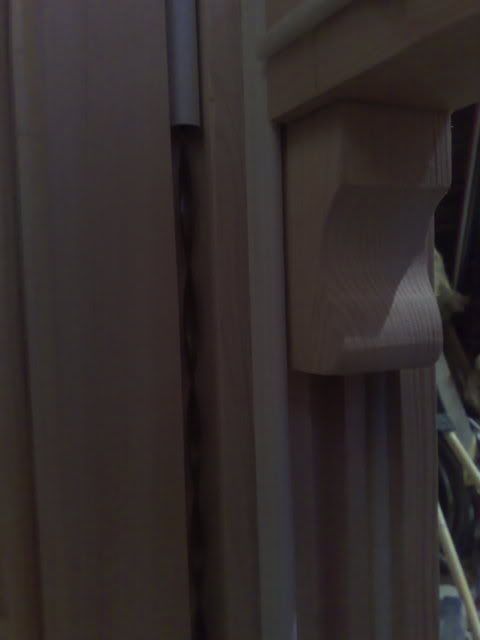 and finally the staff bead , this also has a brush and carrier rebated into it  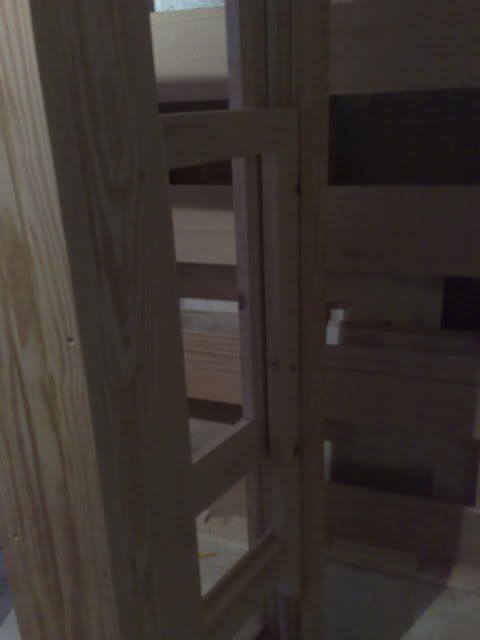  And thats it , easy innit ;D |
|
|
|
Post by jfc on Oct 19, 2008 15:59:07 GMT
Thats it apart from the glazing beads that i forgot to fit  The bottom glazing bead of the top sash is flat and flush with the top of the top sash . I have made it to fit into a rebate as the bottom rail of the top sash is 10mm thicker to allow for the meeting rail . It's flat to allow for a lock to be fitted . I tried to get some better pics of the over all window now i can move it off its template , or is that a rod ;D 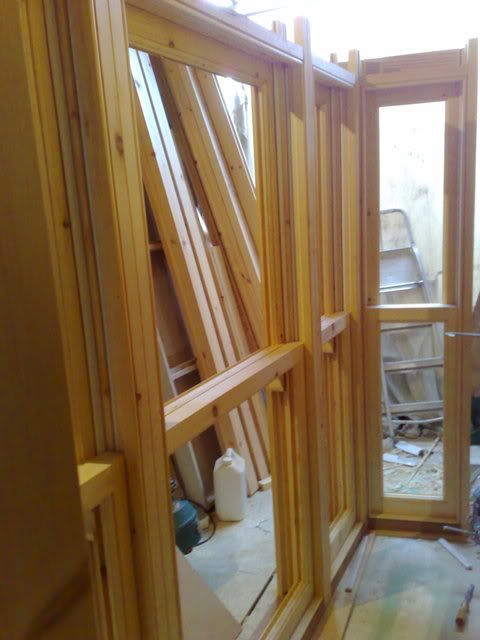 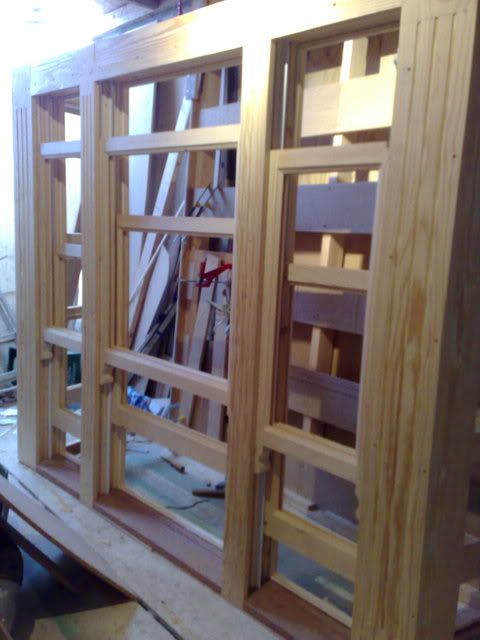 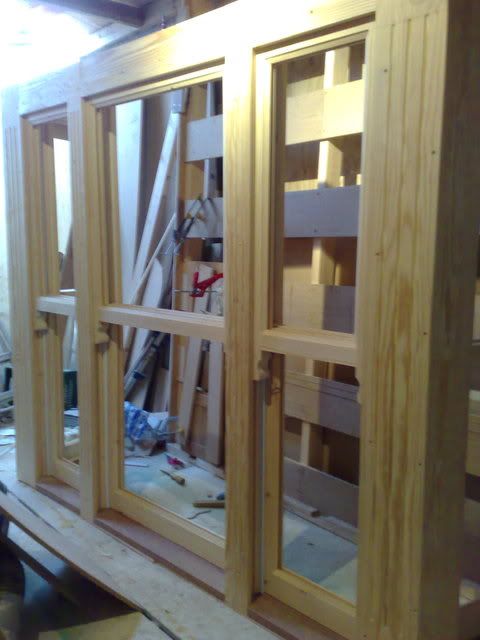 |
|
|
|
Post by jonnyd on Oct 19, 2008 20:29:18 GMT
Looking Good.
Is it normal to not have horns on the bottom sashes in london. Virtually all the ones up here have them on the bottom sashes.
Do you find it easy to put the spirals in the frame I presume it doesnt weaken the sash as much? I might try it next time i have to use them.
jon
|
|
|
|
Post by jfc on Oct 19, 2008 20:43:19 GMT
Now you mention it , it is quite a rare thing to see horns on the bottom sash in London . I have seen a few with it but most dont have it . No idea why , maybe they have been cut off or maybe it was a cost saving thing as most of London was built in stops and starts by certain builders  Adding to that i have worked in some houses where what would have been the servents quarters didnt have horns on the bottom sashes ( Inside ) but the rest of the house did . Funny how architecture even then was just for show and they would cut back on costs at every chance . I switched to putting the spirels in the frame because putting them in the sash was cutting out the haunch in the mortice and tenon . You still need to make a small rebate for the fixing to hold the spirel but it doesnt effect the structure of the joint . It also looks alot nicer . |
|